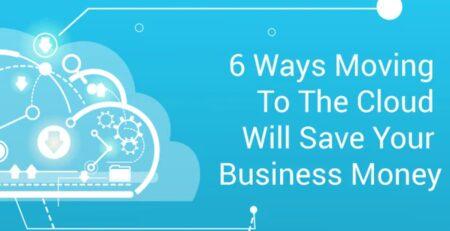The Ultimate Guide to Providing a Seamless Customer Experience

Creating a seamless customer experience might take time and effort, but with 86% of customers willing to pay more for the best experiences, the rewards are more than worth it.
In this article, we’ll be showing you how to create a consistent customer experience that’s designed to reduce customer tension and eliminate customer pain-points.
In turn you’ll see a whole host of benefits, from increasing customer engagement and loyalty to boosting sales and profits. We’ve a lot to cover, so let’s get started!
What is a seamless customer experience?
The term customer experience refers to the entire journey a customer will take when researching, buying, and using a product or service. It also includes the buyer’s impressions and perceptions of a business and their feelings about the interactions along the way.
With this definition in mind, a seamless customer experience is a customer journey that is devoid of any mistakes, delays, or setbacks.
In other words, this kind of customer experience is efficient, smooth, and enjoyable. It should also be consistent across all channels.
For example, whether the customer is buying in store or online, the business should demonstrate consistent branding and tone, high levels of customer service, and a dedication to fulfilling customer orders.
In essence, with every touchpoint meeting or exceeding expectations, a seamless customer experience is a wholly positive experience in which customers face no obstacles to their purchase.
Why is this approach important?
A seamless customer experience is important as it’s the most effective way to keep customers happy and loyal to your business. For instance, 51% of customers are more likely to stay loyal to businesses that offer timely personalised suggestions and updates as part of their customer experience.
Consistently offering this kind of approach is also proven to attract new customers too: 65% of customers say they find great experiences to be more influential than advertising.
It’s for these reasons that customer experience has now been crowned the key brand differentiator for customers. It’s why offering a seamless customer experience is the best way to set yourself apart from your competitors too.
Seamless customer experience in action
To illustrate how a seamless customer experience can work for both businesses and their customers, let’s take a look at the customer journey – one of the most important aspects of the customer experience.
The perfect experience: a customer journey map
The customer journey is the complete collection of steps a customer takes to purchase a product. As such, it’s a huge part of the customer experience as it compromises the actions a customer takes before, during, and after their purchase.
The duration and length of a customer journey will change depending on your business and customers. Nevertheless, to understand how a seamless customer experience will look, it’s worth developing an understanding of the customer journey’s basic stages.
For this discussion, we’ve broken down the stages into five easy steps. If each step is positively achieved with no setbacks or problems, a business can be assured that they’re offering a seamless customer experience.

- Awareness: The customer becomes aware of a need/a particular product.
- Consideration: The customer researches and considers one or multiple products.
- Purchase: The customer purchases a product.
- Retention: The customer finds the product useful or enjoyable and purchases with the business again.
- Advocacy: The customer recommends the business/products to others.
Let’s look at these stages in more detail. In the below example, a customer purchases a new t-shirt online. Notice how the business meets or exceeds the customer’s needs and expectations at each step of the journey, leading to a seamless customer experience that results in customer satisfaction, loyalty, and advocacy.
Awareness:
1. The customer browses social media.
2. The customer sees a t-shirt advertised by a company.
Consideration:
3. The customer visits the site and reads the reviews.
4. The customer connects with customer service on live chat to ask a question about sizing.
Purchase:
5. Happy with the answer to their query, the customer is offered the chance to purchase the t-shirt with the agent. They accept.
6. The customer is asked for feedback on customer service. They are happy and give a positive response.
7. The t-shirt arrives on time with some extra goodies, and the customer loves their purchase.
Retention:
8. The customer receives a free discount voucher via email as a thank you for their order.
9. When they are updated on a new product, the customer explores the site again. They purchase a new item using their discount and receive the same excellent service.
Advocacy:
10. The customer leaves a glowing review and recommends the product to others after enjoying such a great experience.
As we can see, there’s several stages in this example where the business has aimed to make it as easy as possible for the customer to discover their products, learn about them, buy them, and enjoy them.
Ultimately, making the customer journey as easy as possible is all about reducing obstacles that create friction or tension. For instance, say the customer in the above example had a question about product sizing. If the company had no customer service contact channels to speak of, this customer obstacle might’ve ended the customer’s journey right there – without a purchase.
There are many obstacles a customer can face during their journey with many different solutions available. Still, if you start to recognise and rectify these obstacles now, your customer journey and the overall customer experience is only going to benefit.
Let’s take a look at a case study to see how a fashion retailer adopted a new contact channel to tackle a very large obstacle for their customers: the temporary closure of stores due to the Covid pandemic.
Case study: Lululemon and video chat
Between 2019 and 2020, Canadian athleisure retailer Lululemon saw a staggering 40% increase in brand value. The secret to their colossal success was making their customers’ purchases as easy as possible, all through offering a seamless customer experience online.
This approach continued even during the Covid pandemic. While other companies failed to adapt, Lululemon quickly realised that their customers were facing a new obstacle: with stores and shopping centres being closed the world over, customers who wanted a personal customer service experience were being failed online. It was an obstacle that could’ve undoubtedly damaged the company’s bottom line – like it has with so many other businesses worldwide.
However, Lululemon decided to address this customer obstacle head on. To make sure their online customers were getting the same service that they used to receive in person, the company took the opportunity to expand their omnichannel presence. Their biggest innovation was the use of video chat for customer service.
By offering virtual personal stylist appointments via video chat, Lululemon are able to provide their online customers with the same stellar customer experience that they’re used to receiving in store. Customers can even engage with the company’s contact agents over live chat, before escalating seamlessly to a video call whenever it suits them.

Lululemon has always offered their customers the best experiences possible, from prioritizing their social media customer service to offering yoga classes in-store.
Nevertheless, thanks to their adoption of on demand video chat, they’ve been able to offer amazing customer service online, even when they were unable to in store. It’s a prime example of removing an obstacle to offer a completely seamless customer experience.
How to provide a seamless customer experience
Whatever your business or industry, the best way to start offering a seamless customer experience is to put yourself in your customers’ shoes.
By recognising the pain-points they face, you can then lower the barriers and hurdles that are stopping them from converting. The following tips will help you take those all important first steps to delivering a seamless experience.
1. Create buyer personas
65% of companies that update their buyer personas exceed their goals for revenue. The reason why is simple: creating buyer personas helps you understand your true target audience.
When striving to deliver a seamless customer experience, understanding your target audience is essential. If you don’t really know who you are selling to, you are at risk of designing your customer experience around the wrong people.
For example, do you know which demographic currently buys from you the most? Is it the Baby boomers, Millennials, or Gen Z? What about their spending habits? Why do they seek out your products in the first place?
To develop buyer personas, start by speaking with your previous customers and gather actionable data. This could include their age, income, interests, previous purchases, and a whole host of other examples.
Whatever data you decide to gather, for larger organisations, full-blown interviews with hundreds of respondents may be required to create useful buyer personas. For smaller businesses, a few key insights can prove incredibly helpful.
Either way, you should also take the time to speak to your team. Sales staff will be able to identify your most common kinds of customers and their problems. Marketing staff will be able to identify which pieces of content have performed best with which audience.
However you conduct your research, it’s insights like these that will help you truly understand your customers – the first step to building a seamless customer experience.
2. Analyse the customer journey
Positive changes to the customer journey have been proven to lift customer satisfaction by 20%. So, whether your business is primarily online, offline, or a mix between the two, analysing the customer journey is a great step towards keeping your customers smiling.
What’s more, while the goals of analysing the customer journey are to reduce friction and create a seamless customer experience, this approach can also uncover inconsistencies within your processes and procedures. It’ll improve your efficiency in the long run.
For example, one of the primary reasons for shopping cart abandonment is the discovery of hidden delivery fees. An easy solution is to provide an FAQs link earlier in the sales process. It’ll mean less cart abandonment and less customer tension too.
To make sure your customer journey isn’t filled with pain-points, utilise website engagement tools like user recording or analytics software. By examining the data of real-life users, you’ll be able to uncover the areas in which you can improve.
From there, you can begin to design a better journey – one that looks more like our example above. It’ll help you do away with customer tension and deliver a seamless customer experience instead.
3. Deliver convenience and anticipate needs
90% of customers have said that a convenient experience is crucial when engaging with a brand online. Now that you’ve developed an understanding of your target audience and the customer journey, you’re much better equipped to deliver convenience and anticipate customer needs.
As the above statistic shows, convenience is one of the most important aspects of a truly seamless customer experience. Customer service expert Shep Hyken even suggests that it’s now one of the best ways to rival your competition too:
‘Look at what Uber and Lyft did to the taxi industry, what Amazon did to retail… these are examples of convenience that have disrupted not only direct competitors but also entire industries.’

To make sure you’re offering maximum convenience and anticipating your customers’ needs, take another look at your research on your target audience and the customer journey.
While you might have identified areas of friction for your customers, are you offering them as much convenience as possible? How could you anticipate their needs?
For example, did you know that when getting in touch with a company, 67% of customers prefer self-service options to customer service interactions?
To best offer convenience to these customers, you could install a chatbot as part of an omnichannel customer service platform that also offers live chat.
With this kind of platform, your customers can use their favourite channel of choice first. Then, if their option can’t be solved via self-service, their chat can be escalated to a member of the contact team. It’ll prove that a seamless customer experience is your number one priority.
4. Offer personalisation
With 71% of customers feeling frustrated by impersonal shopping experiences, it’s clear enough that a personalised customer experience is now the expected norm.
Customers love personalised experiences for the same reason they love convenience – it makes their lives easier. It’s been proven to boost customer engagement too. As such, offering personalisation is another crucial step towards designing a seamless customer experience.
One of the simplest ways that online companies can offer a personalised approach is to tailor content to their audience’s preferences. The most obvious examples of companies who use this kind of practice are Netflix and Spotify.

However, while these tech giants utilise algorithms and data to offer personalised recommendations and tailored content, you don’t need to get overly technical to start offering your customers similar perks.
You can make a simple start by prioritizing your customer relations. Ask your customers for feedback, and keep in touch to ask how they are enjoying their purchases. It’ll build valuable relationships that can help you design a more engaging and seamless customer experience in the future.
5. Be communicative
Great communication is an incredibly important part of the customer experience. In fact, 68% of customers say their perception of a brand improves when they are sent proactive customer service notifications. It’s proof that keeping too quiet around your customers can be a true customer service mistake.
To make sure you’re offering a seamless customer experience, communication with your team is just as important as it is with your customers.
For instance, say a customer gets in touch with your company through social media, rather than your regular contact channels. They might end up talking to a member of the marketing department. If that member of staff doesn’t know how to solve their problem, the customer could face a delay in receiving their answer. It’s hardly an example of a seamless customer experience.
The first step to solving this kind of problem is to make sure you align your team on your goals. Update them frequently on new products and offers, and always remain open to the idea of further training.
That said, if you’re really serious about offering the best customer experience possible, the best solution is to make sure all your contact channels are connected.
Take the above example in mind: by integrating live chat with social media, customers will be quickly connected to the right people – ensuring the customer experience is always seamless.
6. Keep your promises
It might be tempting to offer your customers the world, but if you can’t keep your promises, you’ve no chance of delivering a seamless customer experience.
Overpromising or overselling aspects of the customer journey is a sure-fire way to invite disaster. As customer experience expert Matt Watkinson suggests, ‘the ideal gap between the brand image (what customers are promised), and the brand reality (what customers actually experience) is zero.’
Let’s take a look at an example. Say you promise your customers you can provide next day delivery. What if your regular delivery service has let you down in the past? If they’ve shown a pattern of late deliveries, you’re at risk of breaking a promise to your customers if the delivery company messes up once again.
While some unexpected problems can’t be avoided, the best way to make sure you’re keeping your promises is to stay realistic and to test your services as much as possible.
For instance, let’s revisit the above example about late deliveries. If your business has experienced similar problems and you’ve made some much needed improvements, you don’t want to let the side down by assuming everything will keep running smoothly in the future.
It’s better to keep testing your processes and procedures again and again, remembering to set competitive but achievable goals. With only 55% of companies currently testing their user experience, it’s another way to set yourself apart.
7. Make your branding seamless and provide trust
It might be a cliche to say that first impressions count, but neglecting your branding across channels can definitely disrupt a seamless customer experience.
For example, if a customer service agent gets in touch with a customer via a generic email address, rather than a company one, it probably won’t inspire much confidence.
The reason branding is so important to your customers is that it broadcasts trust and helps to build a relationship. With 81% of customers saying they want to trust a brand before buying from them, neglecting this area can be a crucial mistake.
Fortunately, there’s an easy fix to this issue: remember that consistency is key.
If you’ve invested in a logo that you’re proud of, ensure it’s clearly in place across all your marketing materials and contact channels. Make sure to always use your signature colours too – especially on social media and in emails. It can increase brand recognition by up to 80%!
Finally, don’t forget to demonstrate trustworthiness on your website, as well as in your external communications.
While it might go without saying that your website should feature consistent branding, your website is your opportunity to deliver as many trust signals as possible. Some customers will take security badges and seals for granted, but other visitors to your site may be more eagle-eyed.
For instance, if you’ve taken the steps to make sure you’re PCI compliant, why not let your more discerning customers know? It’s extra touches like these that mean your customers will always feel at ease, making their customer experience all the more seamless.
8. Boost engagement and show appreciation
If you’ve put your all into providing a seamless customer experience, you don’t want to do your customers a disservice by cutting that experience short.
Customers now expect a degree of engagement throughout the whole of the customer journey – including post-sale. It proves that you want to provide a great experience overall.
The simplest way of engaging customers for longer is to show appreciation through offering additional perks. For example, 61% of customers have said that surprise discounts, offers, and gifts are the best way to engage them.
That said, some companies have had great customer engagement success by simply providing their customers with email updates and a behind the scenes look at new products.
Even a simple thank you email can work wonders. Not only is it the polite thing to do, but offering a sincere post-purchase thank you can make the customer experience all the more memorable.

Whatever engagement strategies you use, it’s these kinds of tactics that can help turn customers into advocates. With highly engaged customers buying 90% more often, it’s certainly worth the effort.
9. Never stop asking for feedback
When it comes to delivering a seamless customer experience for the long term, the importance of asking for feedback cannot be overstated.
Like researching buyer personas and analysing the customer journey, asking for feedback from your customers can help you identify new pain-points that develop over time. After all, while you might have invested in streamlining your current customer journey, it’s more than likely that you’ll have to adapt again in the future.
For instance, customer service and sales staff used to primarily deal with inbound calls from customers. However, these days many customers see this traditional contact channel as an inconvenience. They want quicker, more efficient means of communication. Live chat or web calling, for example.
So, to make sure you’re always keeping ahead of the curve, remember to ask your customers’ questions and listen. If you can automate your customer feedback process or simply make a habit of engaging your customers in this way, so much the better.
91% of customers believe that businesses should fuel innovation by listening to customers rather than experts. Aim to please this huge majority, and you’ll continue to grow for the long term. You’ll be better equipped to deliver consistent and seamless customer experiences too.
The easiest way to deliver a seamless customer experience
According to Microsoft worldwide research, 96% of customers say that great customer service is one of the most important contributors to brand loyalty. What’s more, the same research found that 72% of customers expect contact centre agents to know ‘who they are [and] what they have purchased’ when they get in touch.
It’s proof that for a truly seamless customer experience, sterling customer service is the most crucial factor of all. The great news is that great customer service is now easier to offer than ever before.
If a seamless customer experience is all about providing a smooth and efficient customer journey with no obstacles or pain-points, an omnichannel solution is not only the best approach, but the simplest too.
By allowing your customers to talk to you over a variety of channels, you’re providing them with maximum support and convenience. In turn, customer obstacles are reduced, as is customer tension.
What’s more, an omnichannel approach gives contact centre agents a single dashboard to handle all interactions – regardless of the contact channel the customer uses. It means that whether customers are getting in touch over the phone, live chat, or social media, the customer experience is never interrupted.
The popularity of omnichannel customer engagement is only growing: 78% of customers now prefer an omnichannel approach to standard contact methods. It’s proof yet again that customers are seeking the most seamless of customer experiences. All that’s left for you to do is meet that demand and watch your customer base soar.
This blog post was first published by Talkative.



